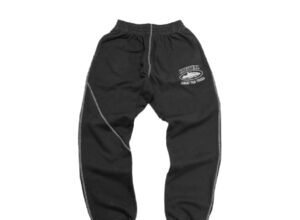Innovations in Heating – Unpacking the Heat Recovery Unit

In recent years, there has been a growing interest in energy-efficient heating solutions that provide warmth and help reduce the carbon footprint of buildings. One such innovation that has been gaining traction is the heat recovery unit. This technology harnesses the heat generated from various sources within a building, such as appliances and occupants, and uses it to pre-heat incoming fresh air. In this blog post, we will delve into the world of heat-recovery units, exploring their mechanisms, benefits, installation process, and ways to maximise their efficiency.
Understanding the Basics of Heat-Recovery Units
A heat-recovery unit, often called a heat-recovery ventilation unit, is integral to modern, energy-efficient buildings. It operates on a simple yet effective principle: capturing the heat from the air expelled from a building and transferring it to the incoming fresh air. This system maintains indoor temperature levels without additional energy-consuming heating mechanisms. The crux of its operation lies in its ability to facilitate an energy exchange through a heat exchanger – a core component where heat transfer occurs.
Unlike traditional heating systems, which might exhaust the warm air outside, a heat-recovery unit ensures that the warmth generated inside, perhaps from daily activities or electrical appliances, is not wasted. Instead, this warmth is efficiently recycled back into the building, thereby enhancing the property’s overall energy efficiency. Integrating such units is a testament to the evolving landscape of building design, focusing on sustainability and minimising energy wastage.
The Mechanisms behind Heat-Recovery Ventilation Systems
At the core of heat-recovery ventilation systems lies the sophisticated heat exchanger mechanism, which plays a pivotal role in the system’s operation. This innovative component ensures that whilst outgoing stale air is expelled from the building, its retained heat is not lost to the outside. Instead, the heat exchanger captures this warmth and transfers it to the cooler incoming fresh air.
This exchange process is meticulously engineered to prevent the two air streams from mixing, thus ensuring that the incoming air remains uncontaminated and fresh. The seamless operation of this system relies on a series of ducts that facilitate the movement of air in and out of the property, efficiently maintaining indoor air quality and comfort levels.
This clever use of existing warmth enhances the building’s energy efficiency and contributes significantly to reducing heating demands, especially in colder climates. Such systems adapt to varying indoor and outdoor temperatures, ensuring the indoor environment remains stable and comfortable throughout the year. Integrating heat-recovery ventilation systems thus represents an intelligent approach to managing building climate control, reflecting a solid commitment to sustainability and energy conservation.
The Environmental Benefits of a Heat Recovery Ventilation Unit
Introducing a heat-recovery ventilation unit into a building’s heating, ventilation, and air conditioning (HVAC) system represents a significant stride towards environmental sustainability. One of the paramount ecological benefits of such a unit is its ability to reduce the energy demand for heating spaces significantly. By recuperating heat from exhaust air and repurposing it to warm incoming fresh air, these systems diminish reliance on fossil fuels and lower greenhouse gas emissions.
Consequently, buildings equipped with heat-recovery ventilation units contribute less to air pollution and climate change, aligning with global efforts to mitigate environmental impact. Moreover, the enhanced energy efficiency brought about by a heat recovery ventilation unit reduces the building’s carbon footprint.
As these systems utilise already generated heat, they decrease the need for additional energy production, thus curtailing the volume of carbon dioxide and other harmful emissions released into the atmosphere. Another critical environmental advantage is the promotion of better air quality. Heat-recovery ventilation units can help reduce indoor pollutants, including volatile organic compounds (VOCs) and particulate matter, by ensuring a continuous supply of filtered, fresh air.
Navigating the Installation of Heat-Recovery Ventilation Systems
Embarking on installing a heat-recovery ventilation system requires a nuanced understanding of the property’s specifications and the occupants’ needs. The process begins with a thorough evaluation of the premises to ascertain the optimal design that aligns with the building’s unique characteristics, such as its spatial layout, the volume of air spaces, and the habitual patterns of its occupants. Engaging with experienced professionals who can navigate the complexities of such a system is crucial.
These experts will assess the most effective placement for ducts and the heat-recovery unit, ensuring minimal disruption and maximised efficiency. Considerations around the building’s existing infrastructure, such as electrical and plumbing systems, must be considered to integrate the new system seamlessly. By prioritising a customised approach that respects the specific demands of each installation, building owners can look forward to an optimised heat-recovery ventilation system that significantly enhances the energy efficiency and comfort of their spaces.
Heat Recovery and Ventilation System – A Synergistic Approach
Integrating heat recovery and ventilation system within a single system epitomises a forward-thinking approach to building climate control. By harmonising these two functions, the system recycles warmth and ensures the continuous renewal of indoor air, striking a balance between thermal comfort and air quality. This symbiotic relationship enhances the system’s overall efficiency, as the heat recovery process is seamlessly complemented by introducing fresh, filtered air into the living spaces.
Innovative design considerations allow these units to adapt to the specific needs of a building, taking into account varying occupancy patterns and seasonal changes. This adaptability ensures the system operates optimally under diverse conditions, providing a consistent and comfortable indoor environment year-round.
The practicality of merging heat recovery with ventilation lies in its simplicity and effectiveness. It embodies a holistic approach to energy management and indoor climate regulation. Such systems are at the forefront of sustainable building design, promoting not only energy conservation but also enhancing the well-being of occupants through improved air quality.
Maximising Efficiency – Optimising Heat-Recovery Units
Optimising the efficiency of heat-recovery units is paramount for harnessing their full potential in energy conservation and operational performance. Here are key strategies for maximising the efficiency of heat-recovery units:
Regular maintenance and cleaning
It is crucial to ensure that the unit and its components, such as filters and ducts, are regularly cleaned and maintained. Dust and debris accumulation can impair the unit’s efficiency, making it work harder to achieve the same level of heat recovery and thus consuming more energy.
Proper insulation of ductwork
All ductwork connected to the heat-recovery unit must be adequately insulated to prevent heat loss, especially in unheated spaces. Heat loss through uninsulated ducts can significantly reduce the system’s overall efficiency, counteracting the benefits of heat recovery.
Utilise smart controls and thermostats
Advanced controls can optimise the operation of heat-recovery units by adjusting the airflow and temperature according to real-time indoor air quality and temperature needs. Smart thermostats can learn from your habits and adjust settings automatically to improve efficiency without sacrificing comfort.
System design and configuration
The initial design and configuration of the heat-recovery unit should be tailored to the building’s specific requirements. This includes selecting the right size of the unit and designing an optimal layout of the ductwork to ensure efficient air distribution. Over-sized or under-sized units can lead to inefficiency and increased energy use.
Balancing Airflow and Filtration for Heat Recovery Systems
Ensuring the optimal balance between airflow and filtration is pivotal for the efficacy of heat recovery systems. Precise airflow calibration is fundamental to facilitating the efficient recovery and redistribution of heat throughout a property. Equally critical is the implementation of superior filters, which play an essential role in safeguarding indoor air quality by obstructing the ingress of pollutants.
The meticulous monitoring and adjustment of these two elements are crucial to maintaining a heat-recovery unit’s long-term performance and reliability. Regular assessments and adjustments to the system’s airflow and filtration capabilities are indispensable for upholding a clean, healthy indoor environment whilst maximising energy recovery and efficiency. This approach enhances the system’s functionality and contributes to a more sustainable and comfortable indoor climate, reinforcing the importance of a well-maintained heat recovery system.
Maximising Energy Efficiency with Heat Recovery Ventilation System
To maximise energy efficiency with a heat recovery ventilation system, it is imperative to focus on the strategic integration and operation of the system. Ensuring the system is accurately sized for the property plays a crucial role. An oversized system may lead to unnecessary energy consumption, while an undersized system might not effectively meet the heating and ventilation demands of the space.
It’s advisable to consult with professionals to achieve a bespoke solution tailored to your building’s specifications. Leveraging advanced, programmable controls can significantly enhance the system’s efficiency. These controls can be set to operate based on specific times of the day or the occupancy levels within the building, thus avoiding energy waste during periods of low demand.
For instance, reducing the system’s operation overnight or when the building is unoccupied can lead to substantial energy savings. Incorporating intelligent sensors that monitor CO2 levels and humidity can further optimise the system’s performance. By adjusting the ventilation rate based on actual indoor air quality requirements, these sensors ensure that energy is not squandered on over-ventilation, thereby striking the perfect balance between energy usage and maintaining a healthy indoor environment.
Conclusion
In wrapping up, the exploration into heat-recovery units illuminates their pivotal role in advancing the sustainability and efficiency of modern building environments. These systems epitomise the harmonisation of comfort, air quality, and energy conservation, standing as a testament to the innovative strides in ecological building practices. As society continues to evolve towards greener living spaces, implementing such technology will undoubtedly play a central part in shaping a more sustainable future. Embracing these systems is not merely a step towards energy efficiency but a leap towards environmental stewardship and healthier indoor habitats.
FAQs
How does a heat-recovery unit work?
A heat-recovery unit utilises a heat exchanger to transfer heat from one fluid stream to another without mixing it. For instance, in an HVAC system, the unit extracts heat from the outgoing air and transfers it to the incoming air, pre-heating it before it enters the building.
What are the benefits of installing a heat recovery unit?
Installing a heat recovery unit offers several benefits, including reduced energy consumption, lower utility bills, and a smaller carbon footprint. Harnessing waste heat contributes to environmental sustainability while enhancing indoor comfort and air quality.
Are heat-recovery units suitable for residential buildings?
Yes, heat-recovery units are suitable for residential buildings of various sizes. They are commonly integrated into modern HVAC systems to optimise energy usage and maintain a comfortable indoor environment. They are particularly effective in tightly sealed homes with limited fresh air circulation.
Can a heat-recovery unit be retrofitted into existing systems?
Yes, depending on their design and compatibility, heat-recovery units can often be retrofitted into existing HVAC systems. Retrofitting allows homeowners and businesses to upgrade their systems to improve energy efficiency without a complete overhaul.
How do you maintain a heat-recovery unit?
Maintenance of a heat-recovery unit typically involves regular inspection, cleaning, and filter replacement to ensure optimal performance. Following the manufacturer’s guidelines and scheduling routine servicing by qualified technicians is essential to prolong the unit’s lifespan and maintain efficiency.
| Related Business Listings |
| Contact Directory |
| Local Business Profiles |




